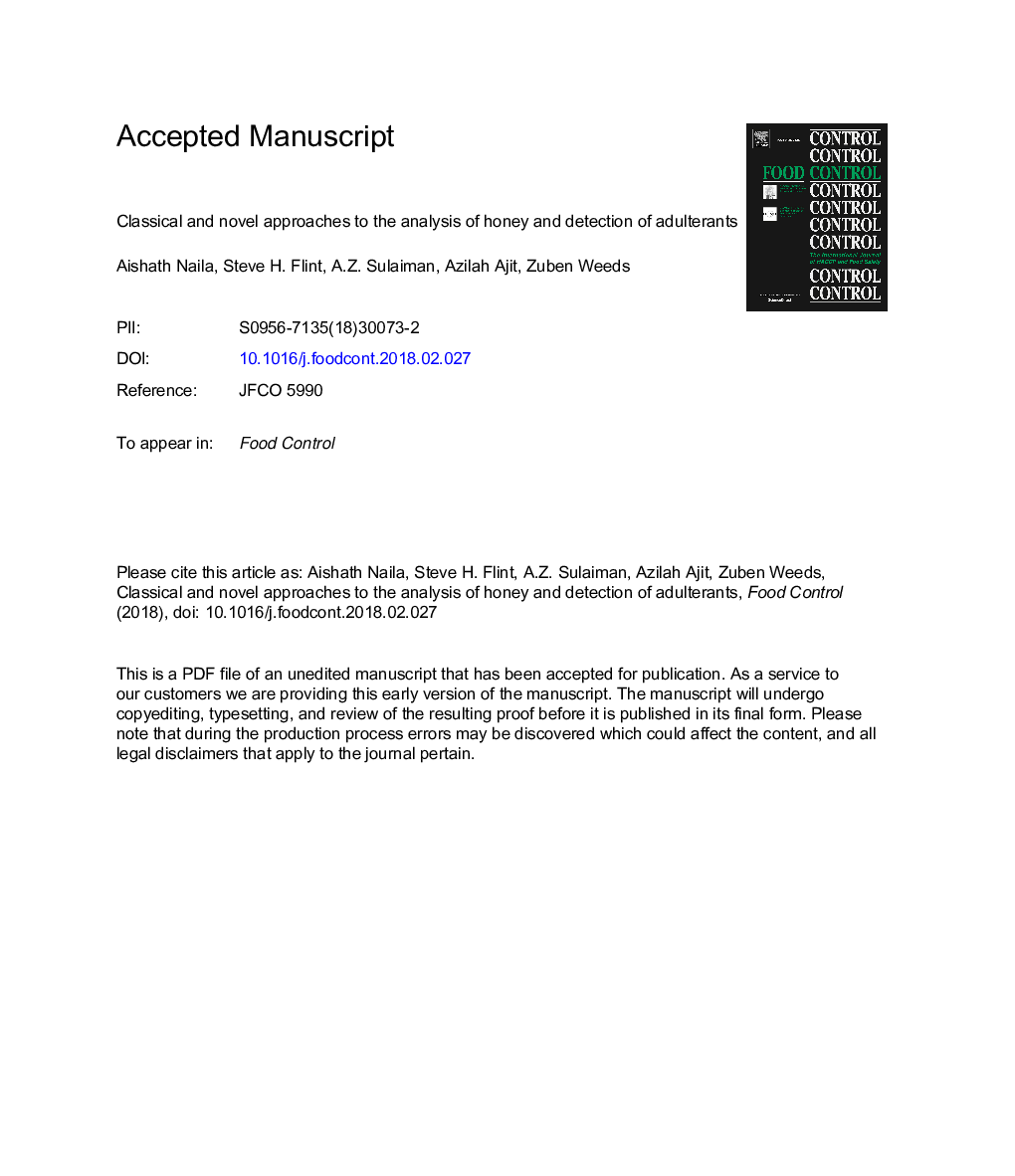| Article ID | Journal | Published Year | Pages | File Type |
|---|---|---|---|---|
| 8887953 | Food Control | 2018 | 58 Pages |
Abstract
Honey is an extract of floral and secretions from a variety of bees. Some honey manufactures adulterate pure honey with industrial sugar, chemicals, and water either directly or indirectly. Many methods have been developed to detect honey adulterants including physicochemical analysis, microscopy, chromatography, immunoassay, thixotropicity, DNA metabarcoding, sensors, and spectroscopy. However, the most promising methods for the development of a portable test kit for honey adulterant detection are ELISA, electronic tongue, and NIR. The most sensitive and accurate method is NIR. These methods have shown satisfactory results when used individually or combined. Further research is still required to trial different combinations of methods to improve accuracy and the ability to detecting a wide variety of adulterants simultaneously. There is a need to develop a portable honey adulterant detection method, such as NIR spectroscopy using a smartphone.
Related Topics
Life Sciences
Agricultural and Biological Sciences
Food Science
Authors
Aishath Naila, Steve H. Flint, A.Z. Sulaiman, Azilah Ajit, Zuben Weeds,
